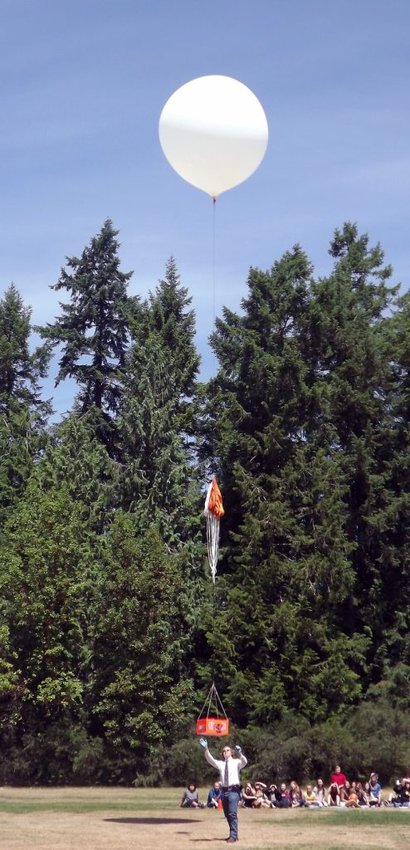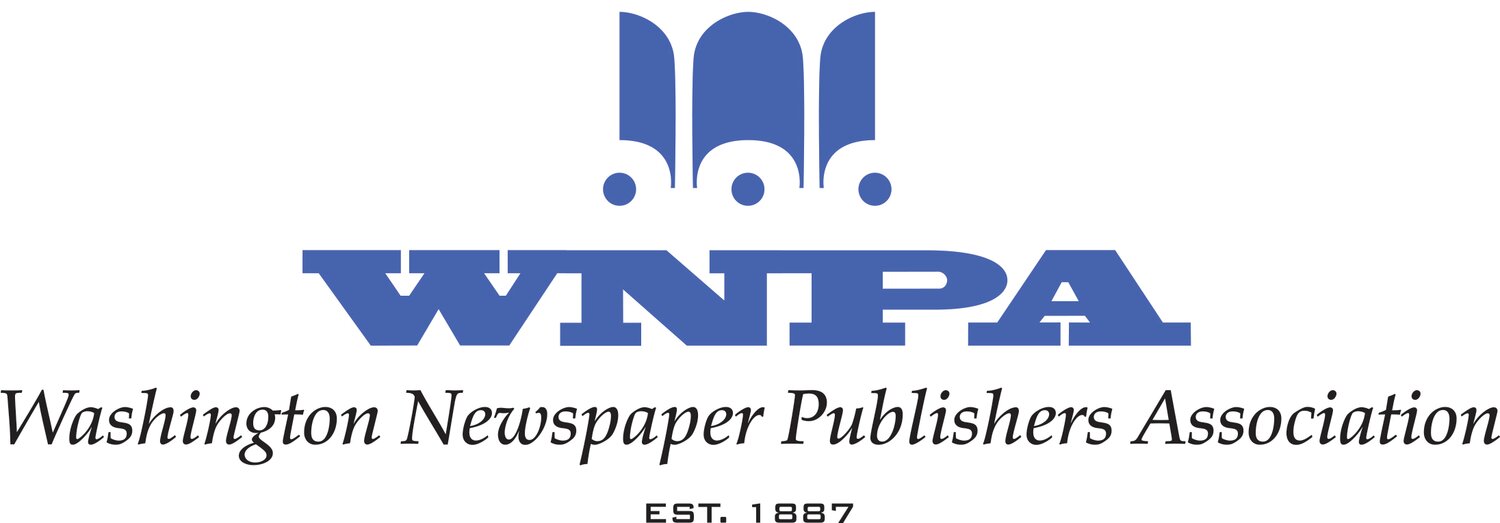Have you ever wondered where a balloon ends up after it disappears into the sky? Key Peninsula Middle School science teacher Richard Miller and his research partner, Ed Bressette, have been releasing balloons in an attempt to answer that question since 2013. Aided by a team of middle school students, they analyze the local jet stream, control the amount of helium, and factor in current weather conditions before an exciting countdown.
Predicting where touchdown will occur is important when you are launching an expensive meteorological balloon carrying a box with sensors, a small flash memory (SD) card and multiple GoPro cameras, especially when you have students back home eager to review the data.
When they sent a balloon up most recently in June 2015, Miller and Bressette anticipated a short flight with quick altitude gain, then movement east from KPMS with landfall somewhere on Tiger Mountain, about 60 miles away. Cameras and a mountaineering spot tracker attached to the balloon should have allowed them to track its progress for almost the whole flight. Instead, the team lost contact with the balloon when it reached 80,000 or 90,000 feet. They waited for the connection to re-establish as the balloon descended, but it didn’t.
Distraught, Bressette drove to Tiger Mountain and posted flyers on hiking trails asking folks to keep a lookout. All previous launches had been tracked without interruption and recovered immediately. As the 2015 hiking season came and went without a phone call, the two worried that their equipment had landed high in a cliff-side treetop or a spot so precarious, it would never be seen again.
But in October 2016, Bressette received an unusual text message: “Hi, I found a piece of a box in the woods. Are you missing a box?” The hiker had retrieved the box and had the cameras wrapped in paper towels in his living room.
While the cameras were damaged beyond repair, Bressette was able to remove and access the SD card with his laptop. It contained a video of the balloon taking off from KPMS and its flight to the mountain.
Bressette presented an edited version of the video at the KPMS Science Night Wednesday, Nov. 2, and later posted it on YouTube at www.youtube.com. Search for KPMS balloon launch 2015.
The team has worked with students to launch three other balloons in recent years, from both Mount Rainier and KPMS.
“You learn about so much,” Miller said. “You learn basic chemistry, you learn about helium and hydrogen and how they are lighter than oxygen, about the need to calculate a payload and how much it’s going to weigh versus how much helium is in the balloon.”
For participating students, the project delivers a breadth and depth of science content unmatched by textbook learning.
"We do a computer projection of the path of the balloon,” Miller said. “Weather, winds, all of the atmospheric stuff you need to know to put something up into near space. We get up well above the atmosphere, where the great majority of the oxygen and nitrogen is, so when our balloons free-fall, they're falling above the atmosphere, so it gives us a chance to talk about that—the physics of the parachutes deploying, the technology of putting the tracking devices on it.”
The most recent balloon went up with humidity, oxygen, temperature and UV sensors so that students could analyze the effect of elevation. Unfortunately, after a year exposed to the elements on Tiger Mountain, all the data, other than UV data, was lost.
Seeking funding after the NASA partnership with KPMS ended several years ago, Miller and Bressette formed The Key Peninsula Science Education Foundation to help fund their ambitious projects. “It gets students excited about science, math and technology, which is crucial for their economic opportunities and the well-being of society,” Miller said.
Miller and Bressette are planning their fifth balloon launch for spring 2017.
For more information or to donate to The Key Peninsula Science Education Foundation, contact Richard Miller at millerr@psd401.net.







